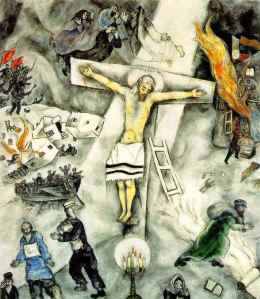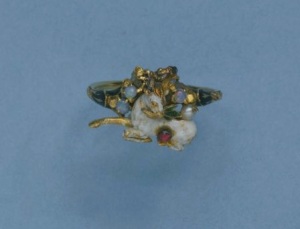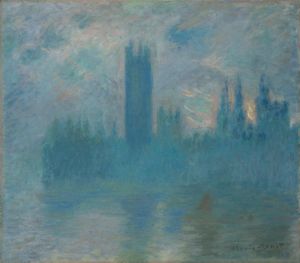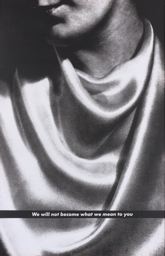It has taken me a while to prepare this final blog post… What should I talk about? Museum practice seminars? My final tours with entirely new groups? My impression of the internship as a whole? Or maybe even how this experience has impacted my next step….?
Why not a little bit of everything?
Museum practice seminars: As mentioned by many other interns, a large part of the internship involved hour long seminars with key members in a variety of different departments at the Art Institute of Chicago. I won’t mention all of them here but I must say that this exposure to the different career paths within a museum was an extremely valuable part of the program. Although we spoke with a total of ten departments, I sensed a common theme which seemed to effect most departments in one way or another. This theme was technology. The Director of the Art Institute, Dr. Douglas Druick, mentioned the importance of digital media in the museum. He discussed the introduction of wifi in the galleries and the push for content based tours. Additionally, he talked about online publications and sharing information with the public. In our discussion with Becky, Georgina and Hillary; Facebook was brought up as an important part of being socially significant. Even teacher workshops entitled “technology and education” have been brought into the fold. We also talked about the use or misuse of digital media at museums like the Met with Annie one afternoon for a seminar session. Finally, in the publications department we heard about online catalogues and the advantages and disadvantages of e-books. Although each department is handling digital media in a different way- the overall consensus seemed to be that there are pros and cons to its application at this time.
Final Tours: My final tours were with entirely new groups! I gave an Art from Many Places tour to a High School group which looked at clothing as representation. I have to say I was a bit concerned prior to their arrival, as this age group had a reputation for being a bit more difficult to engage. Nevertheless, they enjoyed our first piece by the Tembu. I gave them slips of paper with various aspects of the dress on one side and the significance of these items on the other side. They were literally able to “read” the visual language of the Tembu as if they were a part of that culture. They even made connections between our marital traditions and those of the Tembu!
I also worked on the Kaleidescope event that Saturday. Drew and I led a community group which helps underserved youth gain access to extracurricular events. The majority of our group was bilingual. When a few of the girls in the group found out I speak Portuguese, they made everything into a translation game! By the end, no one wanted to leave.
One of the most rewarding experiences of the eight weeks was the opportunity to give a tour to visually impaired high school students. We prepared the tour far in advance but quickly realized that flexibility (as with every tour) is key. A few groups overlapped at times, making it necessary to explore the gallery space “on the fly”. Nevertheless, we explored the museum through all of our senses and the students loved it! As we moved into the studio and worked on incredible sculptural forms, the students in my group continuously expressed their enjoyment of the museum. I was floored by their creativity and really felt that this studio experience was the most meaningful of the eight weeks. The students in my group created flowers out of masking tape, steam rising out of coffee cups and a 3D model of a heart beat with a single pipe cleaner and an index card.
Finally, my first and only family tour. Unfortunately it was hard to round people up as the museum was a bit empty on our last day. I did manage to gather two families, which made for a more intimate experience. We looked at Carl Andre, Ellsworth Kelly and Alexander Calder. Yet again, I was floored by the kids responses. At the Andre the kids wanted to walk with shoes and also barefoot across the sculpture to compare and contrast the different feelings (we made sure it was ok with the guards). At the Ellsworth Kelly we played a game where we “zoomed out” from the image of East River and saw side-ways A’s, a mask, a girl drawing eyes on a table and much more! At the Alexander Calder we saw a dolphin form, noticed the red piece next to the gold circle and broke a rule of pseudo running to get the mobile to move! The tour “ended” with a trip to the touch gallery and an impromptu coloring session. A great way to end my experience as an intern 🙂
Looking back and looking forward: Those first impressions from beginning discussions and readings still hold true: create a comfortable learning environment, honor each individual and his or her ideas, there is no Truth with a capital “T”, knowledge is narrative, facilitate the process of people making meaning for themselves, cultivate curiosity, offer tools for seeing, witness stages of human development, learn something new everyday, sense of discovery, give and receive, limitless possibilities. I think the only phrases I’d like to add are: the practice of always improving, the museum as a public space, passion and flexibility. This internship has solidified my desire to pursue museum education. It has enhanced my understanding of what it takes to constantly improve my practice and opened my mind to the endless possibilities of experiential learning. I am incredibly grateful for the past 8 weeks and cannot wait to pursue this work in the future.
As I look forward, I have been looking at books on the social impact of museums like Making Museums Matter by Stephen Weil and Reinventing the Museum by Gail Anderson. I’m also reading up on the use of mobile interpretation in a museum setting and wanted to share an interesting interview with Nancy Proctor, Head of Mobile at the Smithsonian Institution, as she discusses her perspective on mobile interpretation in museums.
Nancy Proctor Smithsonian Interview
Hope you enjoy the interview and thanks again for such a wonderful opportunity this summer!



















































































































